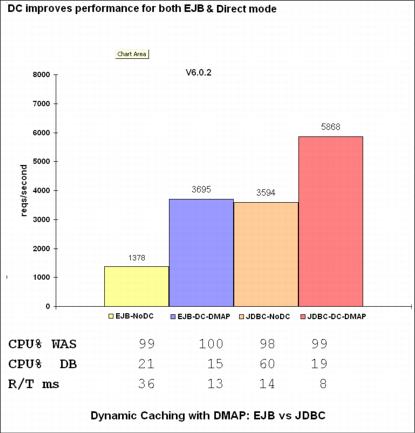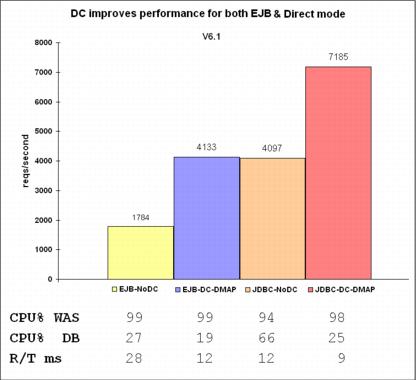2.1.3 The value of Web caching
Web caching involves storing HTML pages, images, servlet responses, and other Web-based objects for later retrieval. There are three significant advantages to Web caching:

| Reduced bandwidth consumption (fewer requests and responses that need to go over the network). |

| Reduced server load (fewer requests for a server to handle). |

| Reduced latency (since responses for cached requests are available immediately, and closer to the client being served). Together, they make the Web less expensive and better performing. |
These advantages add up to a better performing Web site and therefore a better user experience.
The advantages of using DynaCache (DC) can be seen in performance tests run by the WebSphere performance team using the Trade application. Figure | -3 shows comparative results for using DynaCache in an EJB and JDBC application running on WebSphere Application Server 6.0.2, and Figure | -4 shows the comparable results for WebSphere Application Server 6.1. The Trade application used the Dynamic Mapping (DMAP) JSP interface to DynaCache.

Figure 2-3 Impact of DynaCache in WebSphere V6.02

Figure 2-4 Impact of DynaCache in WebSphere V6.1